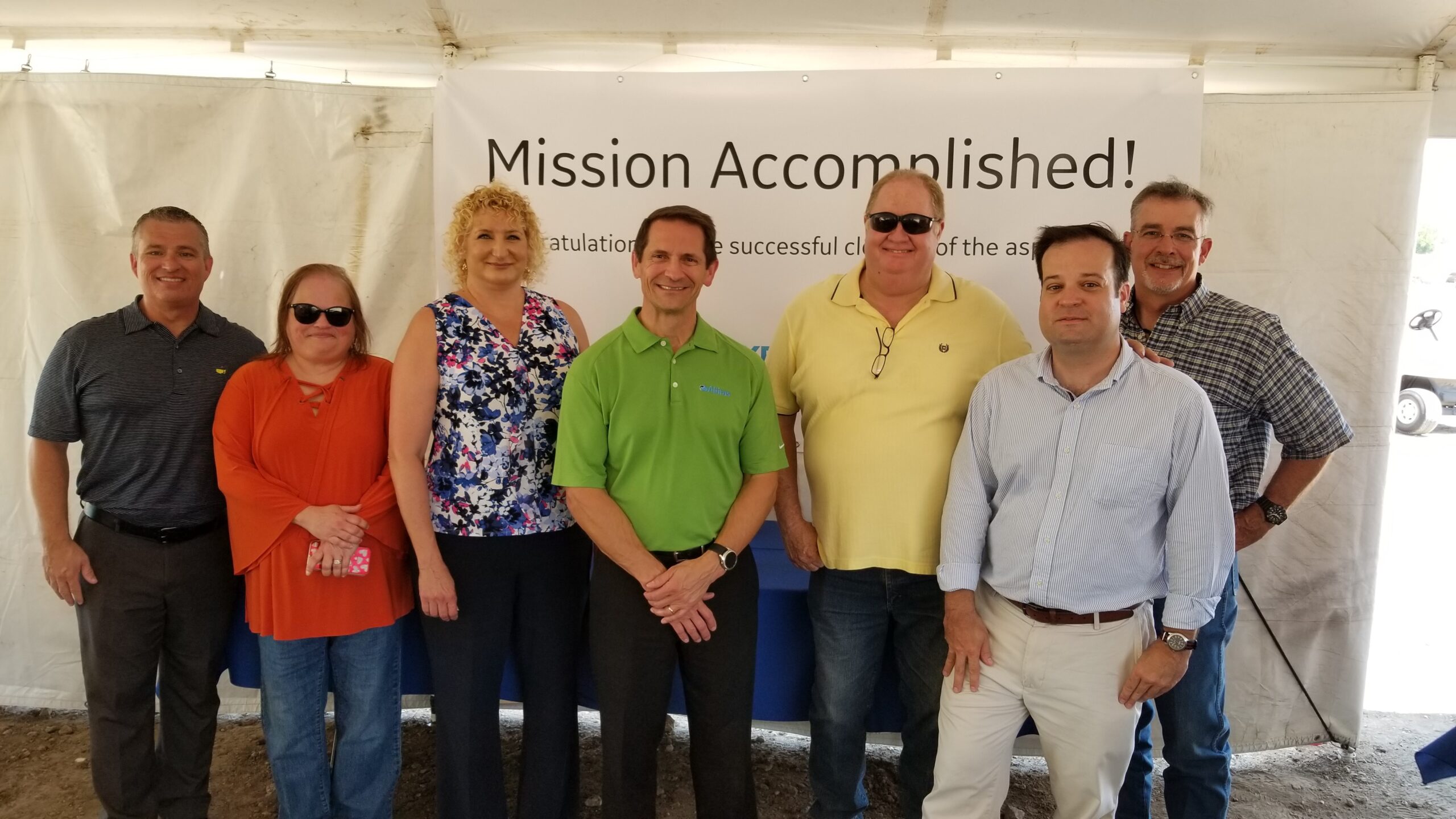On June 6, 2018, Altiras Recovery joined with Baker Hughes, a GE Company, to celebrate the cleanup of a 14 acre “asphalt pit”. Altiras Recovery was the contractor for the cleanup effort, which was reported by local news agencies. The following is an excerpt from the news report.
“BARNSDALL — Baker Hughes, a General Electric subsidiary that operates a chemical plant at Barnsdall, on June 6 celebrated cleaning up a gigantic eyesore it inherited when it took over the site in 1997.
Beginning in 2015, the company carried out a multimillion-dollar project to remove more than a billion pounds of asphalt waste from the property. The waste that became the infamous Barnsdall Asphalt Pit accumulated during the first half of the 20th century, over a period of more than three decades when the site was used for crude oil refining.
Baker Hughes plant manager Jimmy Vaughan said during a project-completion ceremony the 14-acre asphalt deposit had aquired a variety of nicknames, including “the eighth wonder of the world,” and had been the subject dark humor to the effect that it must be visible from outer space — “you can see the Great Lakes, you can see the Grand Canyon, you can see the Great Asphalt Pit of Barnsdall, Oklahoma.”
No more. Vaughan explained the cleanup had meaning not only for Baker Hughes, its employees and the Barnsdall community, but it further demonstrated respect for a Native American graveyard on the property.
“We take care of that property because it is hallowed ground,” Vaughan said, referring to the graveyard. He expressed hope that the cleanup would please “this family that once roamed this property.”
“At the end of the day, we all did the right thing,” Vaughan said.
Todd Pencarinha, president of Altiras Recovery, which carried out the cleanup for Baker Hughes, said the project involved approximately 40,000 truckloads of material. That included 32,000 outbound truckloads and another 8,000 that were inbound with limestone and topsoil to fill in the area from which the asphalt waste had been removed.
Pencarinha and other program speakers emphasized that the project was a rare sort of challenge. There were no papers or manuals to tell the participants how to manage the engineering obstacles they would face. Pencarinha recalled that the project plan changed regularly during the initial six months of work. There were also millions of gallons of water to manage in the waste-disposal area, he said.
He pointed out that the three years of cleanup were done safely — no safety incidents for three years. Dina Kuykendall, director of Environmental Affairs and Sustainability for Baker Hughes, also spoke of the challenges that the cleanup involved.
“And I can say that, through it all, our commitment to doing the right thing never wavered,” Kuykendall said. “You can smell the difference. There is no more odor.”
Kuykendall, who has global responsibility for environmental issues for Baker Hughes, recalled the strangeness of the asphalt pit as an environmental phenomenon.
“It felt like a newly formed lava field,” she said, reflecting on what the mid-summer Oklahoma heat would do to the pit…”
